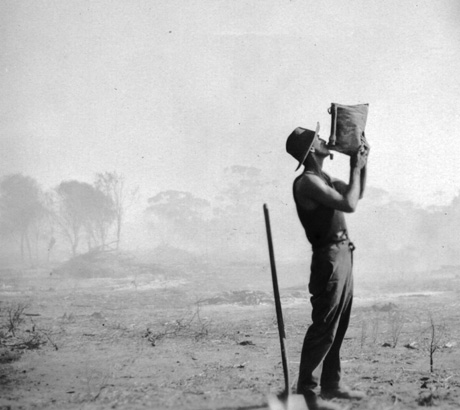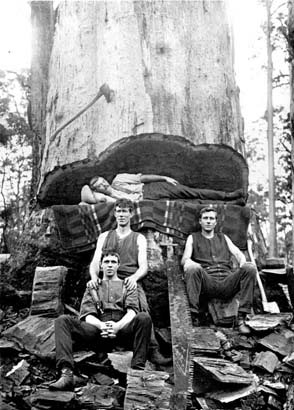 |
||||||||||||||||||||
|
The Land
Until the discovery of gold the economy of Australia's western colony relied on its small agricultural and pastoral industries. Most farming was done in the south-west and around the Champion Bay district near Geraldton, although a pastoral industry began in the remote Kimberley in the 1880s. Great distances separated fertile areas within the colony, and the local commerce and coastal shipping needed to support it only began to flourish towards the end of the 19th century.
The story of the land in Western Australia is the story of farming and forestry. The first part of the twentieth century saw a massive expansion of the area of land under cultivation through a range of land clearing programs. Most newly cleared land was put to use in the cultivation of wheat and other crops. This boom in farming was the result of scientific and techological innovations in agricultural practices. Similar improvements in farming techniques contributed to the development of other rural industries such as the market garden industry, supplying the State's fruit and vegetables, as well as the establishment of wine, tobacco and dairy industries. |
||||||||||||||||||||
|
|
||||||||||||||||||||
Please note: The content on this website is made available for archival purposes and may not meet the State Library of Western Australia's current standards for web accessibility, mobile device compatibility, historical accuracy and cultural sensitivity.






